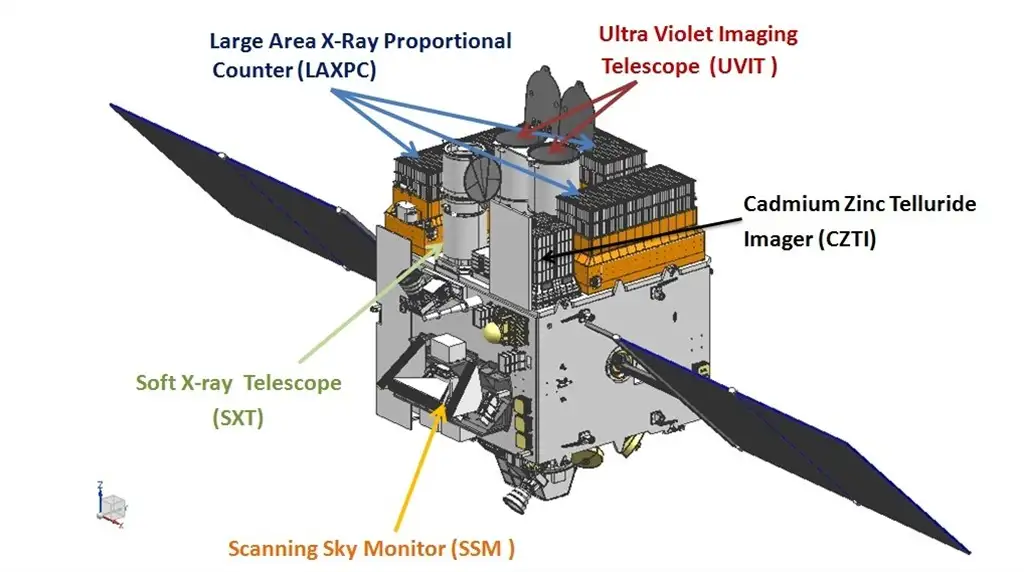India’s Pioneering Space Telescope Celebrates Over 600 Dazzling Discoveries in 8 Years
Bengaluru, NFAPost: In a monumental achievement, India’s AstroSat space telescope has surpassed the 600-mark in detecting Gamma-Ray Bursts (GRBs) over the span of eight years. Each GRB signifies the demise of a massive star or the merging of neutron stars, offering a cosmic spectacle akin to mini-big bangs.
Dipankar Bhattacharya, the principal investigator for the Cadmium Zinc Telluride Imager (CZTI), expressed pride in AstroSat’s continued stellar performance, stating, “The detection of the 600th GRB is a great demonstration of the continued undiminished performance of CZTI eight years after launch, and well after its design lifetime.”
Termed as the most energetic explosions in the universe, GRBs emit more energy in mere seconds than the sun does throughout its entire lifetime. Gaurav Waratkar, a PhD student at IIT Bombay leading the GRB study with AstroSat, described these phenomena as brief yet powerful events lasting from a fraction of a second to several minutes, often culminating in the birth of a black hole.
Launched in 2015 by the Indian Space Research Organisation (ISRO), AstroSat exceeded its initial design life of five years and remains in robust health, continuing to contribute valuable observations for astronomers. As India’s first dedicated multi-wavelength space observatory, it boasts a suite of payloads enabling simultaneous observations of celestial objects across various wavelengths, from ultraviolet to X-rays.
Varun Bhalerao, associate professor at IIT Bombay, revealed ambitious plans for the future, stating, “To build upon this success, multiple institutes have come together and proposed to build Daksha, a next-generation GRB space telescope that will be far better than any such satellite worldwide.”
The 600th GRB detection, made by AstroSat’s CZTI detector on November 22, was promptly communicated to astronomers globally, providing them with valuable data for further research into these high-energy events and the extreme conditions associated with them. Reflecting on this milestone, Waratkar expressed awe, saying, “It is amazing to look at the data and have the opportunity to be the first one to view these explosions that happened billions of years ago.”
Since the 600th GRB, CZTI has continued its vigilant watch, detecting three more events, with the latest occurring on Monday. The scientific revelations from AstroSat’s various instruments have resulted in the publication of over 400 peer-reviewed research articles, underscoring the significant impact of India’s pioneering space telescope on advancing our understanding of the cosmos.





